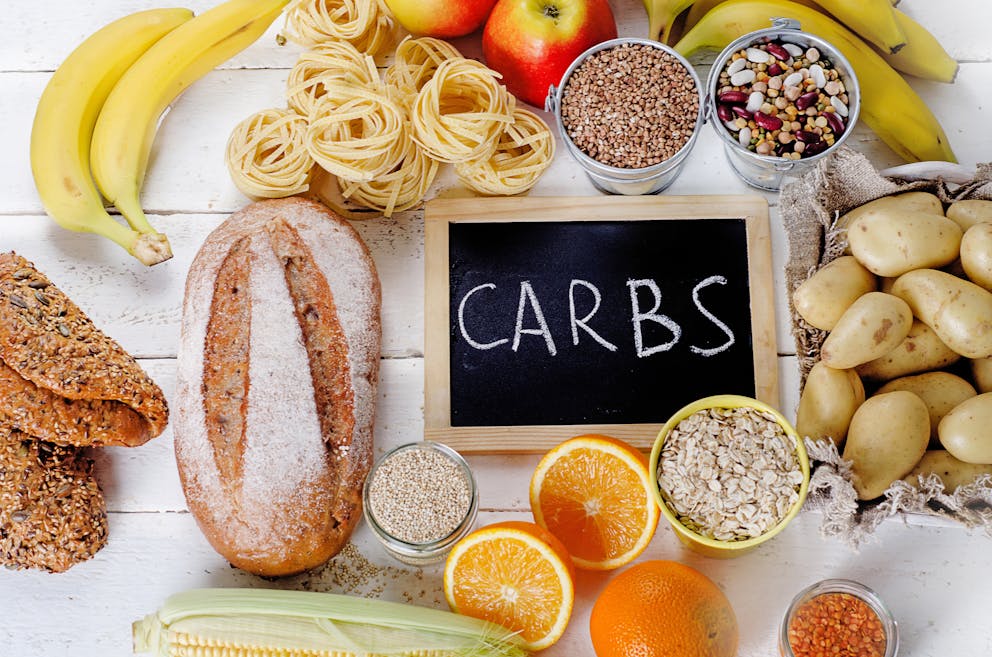Sugar Yeast and Candida
When managing Candida, diet is critical for curbing and treating this widespread fungal infection.
Explore the intricate relationship between sugar consumption and immune system function and discover the dietary choices that can either promote or inhibit yeast growth.
Learn why hidden sugars found in everyday items such as alcohol, fruit-based products, and carbohydrate-rich foods like bread and pasta may be the reason for persistent yeast infections.
The Impact of Sugar on Immune System and Infections
Consuming sugar can weaken your immune system, making you more susceptible to yeast and fungal infections and slowing down wound healing in diabetics.
Neutrophils are the superheroes of our immune system. They quickly migrate toward infection sites and destroy harmful bacteria, fungi, and other foreign substances. They are the first responders when it comes to microbial invasions.
How Sugar Consumption Weakens the Immune System
Sugar has been shown to suppress neutrophil activity for several hours after ingestion, significantly increasing your risk of microbial infections.
Consuming high amounts of sugar regularly can cause chronic inflammation due to elevated insulin levels. This constant state of inflammation weakens your immune system over time because it hinders the normal functioning of various cells involved in immunity.
Inflammation: High-sugar diets increase the production of inflammatory cytokines such as interleukin-6 (IL-6) and tumor necrosis factor-alpha (TNF-alpha), both known contributors to chronic inflammation.
Impaired neutrophil function: Sugar consumption can directly damage the ability of neutrophils to fight off infections effectively.
Oxidative stress: Excess sugar intake generates reactive oxygen species (ROS), which cause oxidative stress and damage to cells, further weakening your immune system.

How Carbs and Sugars Fuel Candida Overgrowth
Candida is a type of yeast that naturally exists within our bodies but can cause problems when it overgrows due to excessive sugar intake.
When there's an imbalance in the gut microbiome, Candida albicans can multiply rapidly, leading to various symptoms and health issues.
Explore the connection between Candida overgrowth and blood sugar levels, while also learning about ways to stop feeding these harmful microbes.
Symptoms of Candida Overgrowth
Common signs of candidiasis, a yeast infection or candidosis, include oral thrush (white patches on the tongue), fatigue, brain fog, digestive issues like bloating and constipation, skin rashes, or itching sensations around genital areas.
In severe cases, it may even lead to fungal infections in other body parts, such as nails or sinuses (fungal form).
If you suspect a yeast overgrowth problem based on your symptoms alone, consult your healthcare provider for a diagnosis.
High vs. Low Blood Sugar Levels Impact on Candidiasis
A diet rich in added sugars promotes Candida growth by providing them with their preferred source of energy - glucose.
This includes foods high in simple sugars such as:
Processed snacks containing artificial sweeteners
Starchy vegetables like potatoes
High-sugar fruits like grapes
Dairy products containing lactose (milk sugar)
Non-starchy vegetables cooked with added sauces full of hidden sugars
In contrast, a low-carb diet like the ketogenic diet can help control blood sugar levels and starve Candida by removing it's primary energy source.
This approach is often combined with an anti-Candida diet, which focuses on eliminating foods that promote yeast growth while emphasizing those that support gut health.
It's important to note that individuals with low blood sugar levels (hypoglycemia) may also be at risk for developing candidiasis due to weakened immune systems and a higher susceptibility to infections.
Tips for Reducing Sugar Intake & Fighting Candidiasis
Avoid hidden sugars: Read food labels carefully and watch for ingredients ending in "-ose" (e.g., fructose) and other sneaky sources of added sugars such as honey or agave syrup.
Cut back on alcohol consumption: Alcoholic beverages are high in sugar content, which can feed yeast overgrowth directly. Look for healthier alternatives like herbal teas or chicory coffee instead.
Incorporate fermented foods: Fermented products like sauerkraut, kimchi, and kefir contain beneficial bacteria (Lactobacillus acidophilus) that help restore gut microbiota balance, thus inhibiting the growth of Candida yeast.
Foods to Fight Candidiasis: What to Eat and What to Avoid
Have you got a yeast infection? Here's a list of foods you should eat and avoid to help you combat candidiasis.
Healthy Fats
Maintaining hormonal balance, brain function, and overall health requires healthy fats. Include sources of omega-3 fatty acids like wild-caught salmon, chia seeds, and flaxseeds in your diet.
Try incorporating oils such as extra virgin olive oil or coconut oil, which possess antifungal properties. In addition, the following foods can also be beneficial in an anti-Candida diet:
Avocado: Packed with healthy monounsaturated fats.
Coconut: Contains medium-chain triglycerides that boost energy and metabolism.
Nut butter: A tasty way to get healthy fats, but look out for any added sugars.
Protein
Protein is essential for a healthy immune system, especially when fighting Candida overgrowth. Opt for organic chicken, grass-fed beef, wild-caught fish, and eggs from pasture-raised hens.
Plant-based options like tempeh and legumes are also excellent choices. Just say no to processed meats with added sugars and other harmful additives.
Vegetables
Non-starchy vegetables like leafy greens, broccoli, cauliflower, zucchini, cucumber, celery, and bell peppers are packed with essential nutrients that support overall health and immunity.
Plus, they won't feed the yeast infection with excess carbs.
Nuts
Almonds: Rich in vitamin E to boost your immune system.
Pecans: They contain antioxidants that protect cells from damage.
Brazil nuts: A great source of selenium to support thyroid function.
Hazelnuts: High in magnesium to aid digestion.
Hidden Sugars That Could Be Feeding Your Yeast Infection
Are you unknowingly feeding your yeast infection with hidden sugars? No need to worry; we have you covered.
Here are some surprising sources of hidden sugars found in everyday foods:

Alcohol
Alcoholic beverages, especially beer and wine, are high in sugar content, which can feed the growth of Candida. Mixed drinks with soda or fruit juice add extra sugar to your diet.
If you're having issues with Candida overgrowth, it's recommended to reduce your alcohol intake or pick lower-sugar alternatives such as spirits combined with carbonated water.
Juice and fruit-based products
Fruit juices may seem healthy due to their vitamin content; however, they often contain large amounts of natural sugars. This leads to rapid spikes in blood sugar levels, which can encourage Candida overgrowth.
Avoid fruit juices, canned fruits, and dried fruits, as they have concentrated sugar levels.
Bread, pasta, cereal, and other carbohydrate-rich foods
Bread: Most breads are made from refined grains that quickly convert into glucose upon digestion - providing an ideal environment for Candida growth.
Pasta: Like bread, pasta is a refined carbohydrate that can contribute to yeast overgrowth.
Cereal: Many breakfast cereals are high in added sugars and refined grains.
Sweeteners in yogurt and other dairy products
While plain full-fat yogurt can benefit Candida treatment due to its probiotic content, flavored yogurts often contain large amounts of added sugar, which may exacerbate symptoms.
Be cautious with other dairy products, such as flavored milk or ice cream, as they also have high sugar levels.
Eliminating hidden sugar sources that could fuel the infection will give your body the best chance at recovering from candidiasis while maintaining overall health. Be aware of your diet and choose lower-sugar options when available.
Alternative Remedies for Candidiasis
If you're dealing with candidiasis, you can try several natural remedies at home to complement traditional treatments.
Here are some alternative options:
Apple Cider Vinegar
ACV has long been used for its antimicrobial properties, especially to treat candidiasis.
ACV possesses acetic acid, which may impede the proliferation of Candida albicans and other harmful microorganisms.
To use ACV as an alternative treatment:
Dilute one tablespoon of raw, unfiltered ACV with eight ounces of water.
Drink this mixture two times daily before meals.
Add a cup of ACV to your bathwater and soak in it for around 20 minutes daily until symptoms improve.
Garlic
Garlic is another popular alternative remedy for candidiasis due to its potent antifungal properties.
Allicin, an active compound found in garlic, is effective against Candida albicans.
To use garlic as a natural treatment:
Eat one to two cloves of raw garlic daily.
You can also crush the cloves and mix them with coconut oil or olive oil before applying them topically on affected areas.
If you prefer not to consume raw garlic directly, consider taking odorless garlic supplements following the recommended dosage instructions on the product label.
Potential Sensitivities and Precautions
While natural remedies may relieve candidiasis symptoms, it's essential to exercise caution when trying them out.
Some individuals might be sensitive or allergic to certain ingredients in these remedies.
Hence, it's crucial to always test on a small skin patch before applying topically or ingesting any new substance. Pregnant women should seek medical advice before utilizing any alternative treatments during their pregnancy.
Incorporating probiotics into your diet is another way to naturally support your body's fight against Candida overgrowth by promoting healthy gut flora balance.
You can consume fermented foods like unsweetened yogurt, kefir, sauerkraut, and kimchi or take a high-quality probiotic supplement.
Conclusion
Limiting high-sugar foods and incorporating anti-Candida foods like protein sources, veggies, nuts, and healthy fats can combat Candida overgrowth.
Apple cider vinegar and garlic may also be helpful, but consult a healthcare professional before starting a new diet or treatment plan.
Previous blog
The Best Foods for StressNext blog
Do You Have a Copper Deficiency
Popular
08/21/2024
55.7K views
02/23/2025
46.8K views
11/18/2024
281.1K views
03/18/2024
11/21/2022




